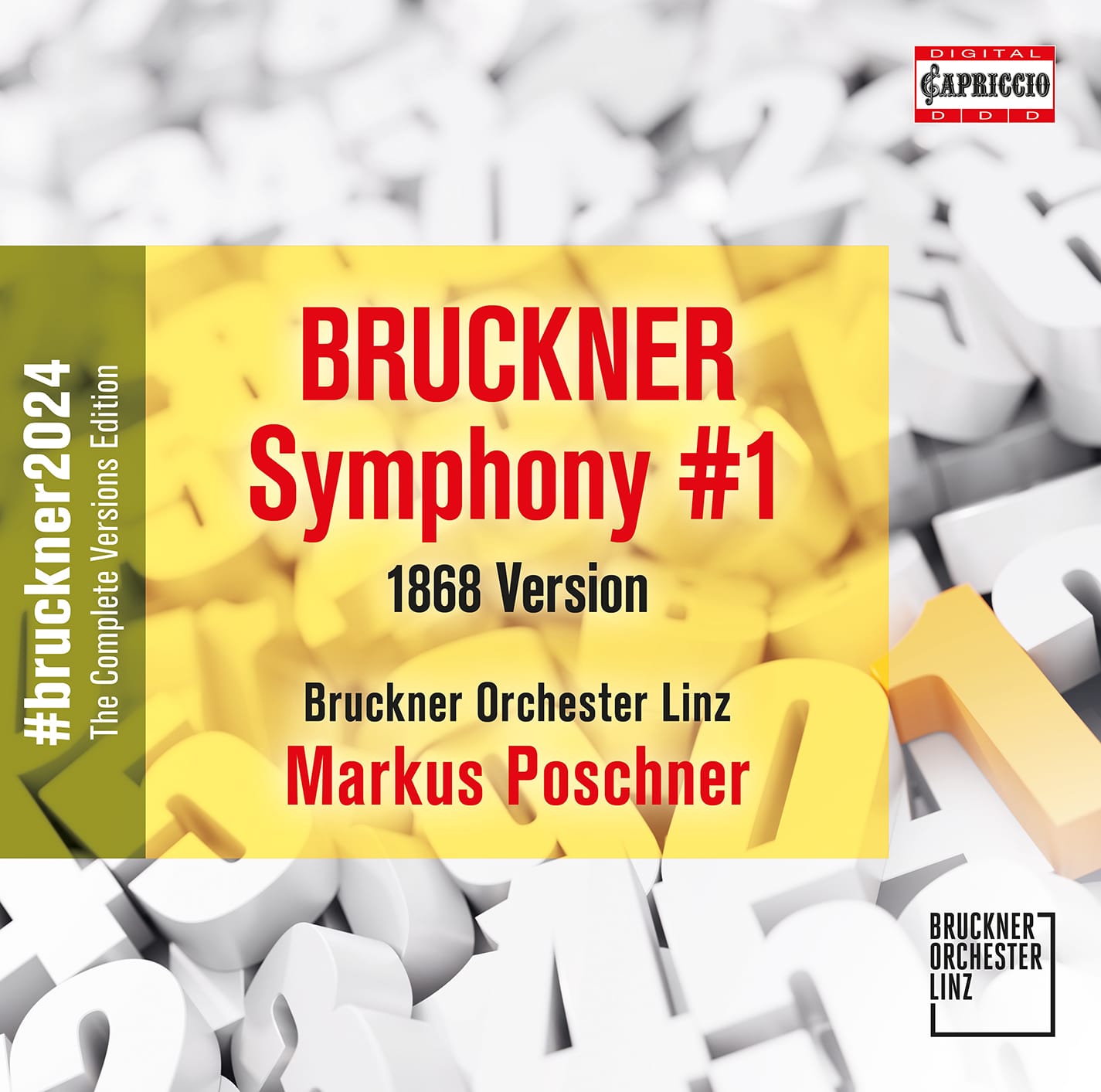What a difference a performance makes!

Bruckner’s First Symphony was not, of course his first. Bruckner is “that” composer who wrote a Symphony No. 00 (Double Zero). But even his ‘real fist symphony went through teething problems: the first performance in Linz was a and one, and the work flopped like a flipped pancake missing the pan. It was only nine years (and full five symphonies) later, that an adjusted score was produced, and performed in 1884, successfully. Strange, then, that he made further revisions, and it is the later 1891 score that is known as the “Vienna” version.
It is more than completism to record the Linz version of 1868, heard here in an edition by Thomas Röder of 2016. Flop though the symphony might have been in Linz back in the day, but now in Linz in 2023 (the recording took place Linz’s Musiktheater in February 2023), performed by the Bruckner-Orchester Linz and Markus Poschner as part of their wonderfully thorough Bruckner2024 series, it sounds all of a piece. Remember that the aim of the “Bruckner2024” project is:
This Complete Versions Edition includes all versions published or to be published under the auspices of the Austrian National Library and the International Bruckner Society in the Neue Anton Bruckner Gesamtausgabe (The New Anton Bruckner Complete Edition)
It just happens to transpire that in that process, discoveries aplenty are made. Not to mention an invaluable insight into the genesis of a symphony. Each requires a performance that stands by the integrity of each version – and Poschner is an expert at just that. His enthusiasm shines forth in the music-making as much as it does in this introductory video. I do recommend watching this – it is packed with background information, as well as excerpts tied to this recording process:
The first movement begins with an insistent rhythm – we are not quite at the tremolo opening stage yet. We can hear influences around Bruckner, too, not least around the three-minute a clear reference Wagner’s Tannhäuser Overture (remember Bruckner prepared the chorus for a performance of that opera in Linz in 1863). Fanfare motifs, too, are important in this symphony. The music is a bit like a compendium of Bruckner tropes – but only if we listen retrospectively, If we open our ears to the freshness of invention, of Bruckner finding his own unique way forwards, suddenly the music sounds new, the potential endless. And the performance by the Linz orchestra is splendid:
The slow movement is simply extraordinary. The hesitancy of the opening – as if it is trying to bring itself into form, the struggle to blossom into melody, is completely unexpected if one is only used to the extraordinary lyrical outpourings of the later symphonies. When the woodwind emerge in their passage around two minutes in, it does feel as if we land on familiar territory, though.
The Scherzo is the true highlight of this performance: fiery, full of life, energetic, punchy. The Capriccio recording captures the orchestra’s bite to perfection, while Bruckner’s dizzying, circular linear writing has the required effect. The Trio is beautifully contrastive, woodwind nicely to the fore:
The finale is the longest movement, its material comprising no fewer than three thematic groups. This is an ambitious canvas full of contrasts, and Bruckner’s combining of themes is fascinating. Poschner pushes the music forwards, raising the excitement level. Early though this symphony is, there is still the sense of operating on a large canvas, on completely understood by Markus Poschner:
A fascinating release. There are of course other Bruckner Firsts of this 1868 version, but not to my knowledge of this edition. A must for Bruckner fans.
You can buy this from Amazon here. Streaming links below.











